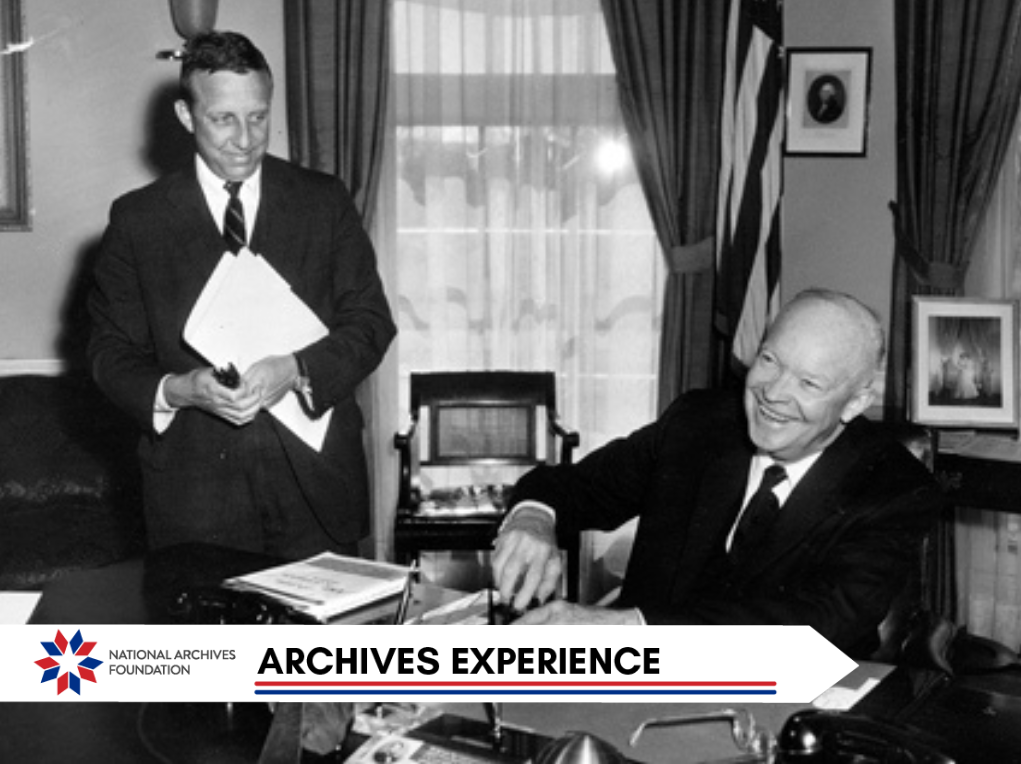Speaking of the First Amendment
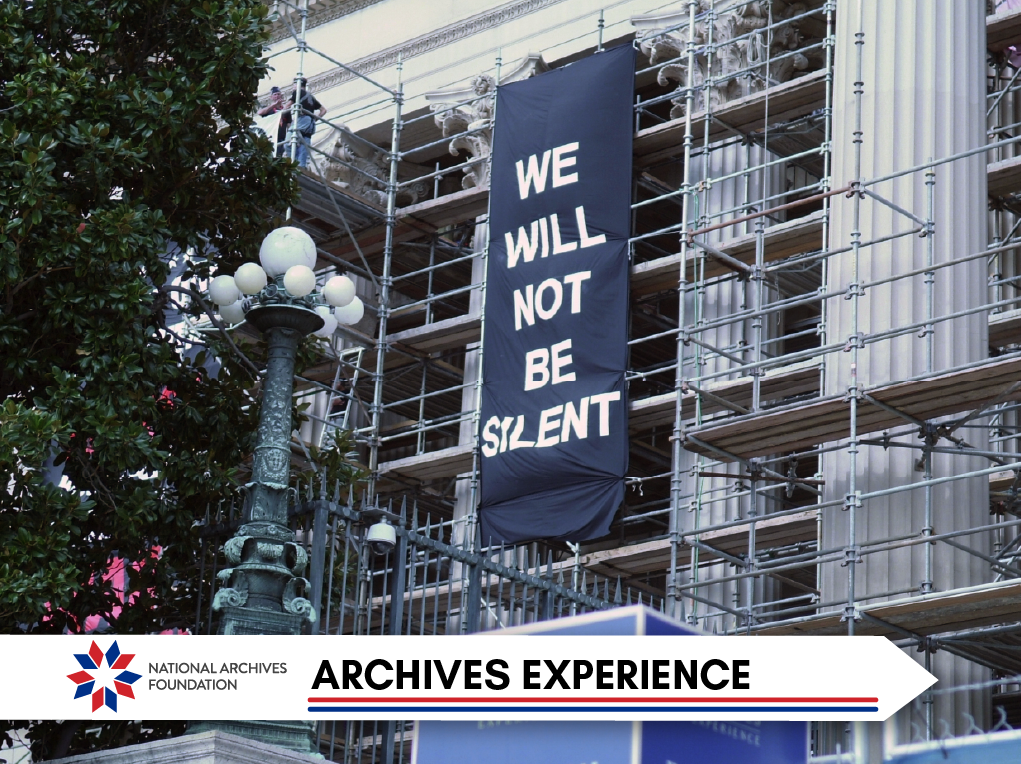
The turn of the 20th century was an interesting but volatile time in America. With the Civil War behind us, formerly enslaved people were attempting to forge their own paths, while an unprecedented number of immigrants arrived on our shores in search of a better future. Industrialization was full steam ahead, and America was emerging as a leader in the global community.
The nation was rapidly becoming more diverse, in people and ideas. As what was considered acceptable speech was called into question, the role of the first amendment began to take shape.
So, what types of speech are truly free?…
In this issue
The onset of the war gave the federal government an opportunity to threaten to censor publications…
History Snack
You Know It When You See It

Front cover: The Police Gazette
Source: Records of Rights
If you’re a fan of true crime podcasts, documentaries, and books, you have the first amendment to thank. In 1865, two journalists, an attorney, and a railroad worker founded The National Police Gazette. It followed police activity with the voice of sensational journalism, covering gruesome murders, Wild-West outlaws, and sports like bare-knuckle boxing. As the magazine evolved throughout the 20th century, it began including photos of burlesque dancers and strippers.
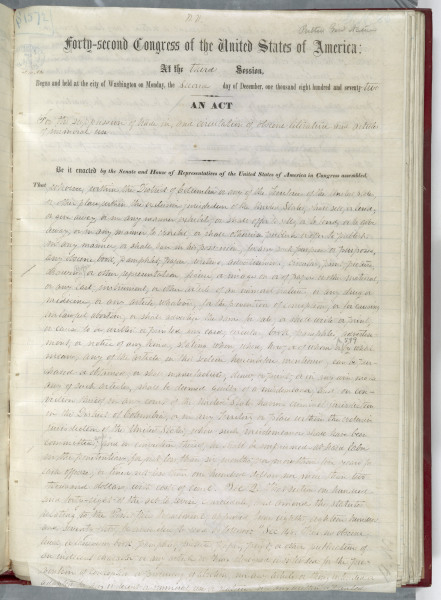
1873 Comstock Act
Source: Records of Rights
The magazine was published during an interesting time in U.S. history. Just eight years after its first publication, the Comstock Act of 1873 was passed, making it illegal to “send obscene, lewd or lascivious, immoral, or indecent publications through the mail.” By 1890, the Gazette’s outlandish coverage of crime, police reports, and immoral conduct came under fire, and a citizen petition circulated for the Gazette to be labeled obscene. Crime wasn’t the only target; boxing, which had been illegal for most of the 19th century, was also under fire. The Gazette published particularly graphic photos of bare-knuckle boxing matches, which generated complaints to Congress.
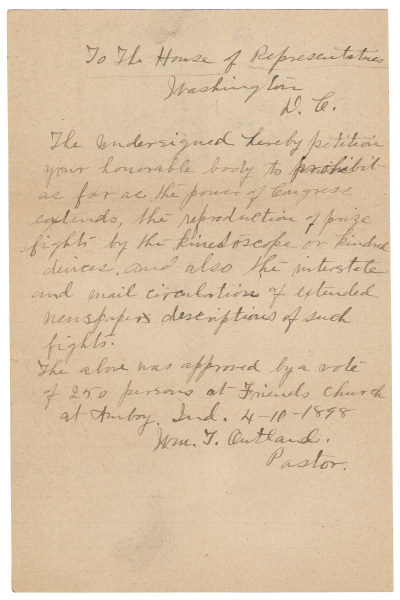
Letter to Congress against depictions of boxing, 1898
Source: Records of Rights
In September 1942, the United States Postal Service barred “The Police Gazette” from being distributed by mail for containing obscenity. But since The Gazette had been declining in popularity, there was no real fight over the definition of obscenity.
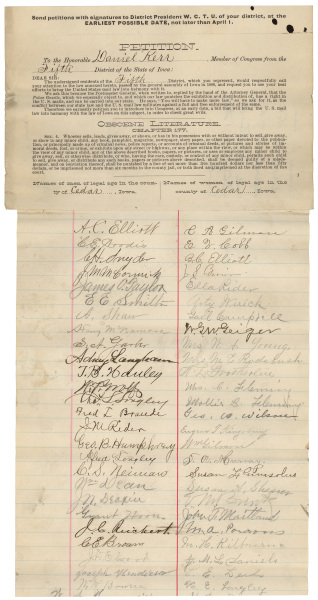
Petition against the publication of crime, 1890
Source: Records of Rights
That fight didn’t really start until the early 1960s, when a movie theater owner Nico Jacobellis was convicted of a felony for possessing and distributing an obscene film called The Lovers. The state of Ohio classified the film as obscene, with their particular objection being to an off-camera/implied sex scene. The case went all the way up to the Supreme Court.
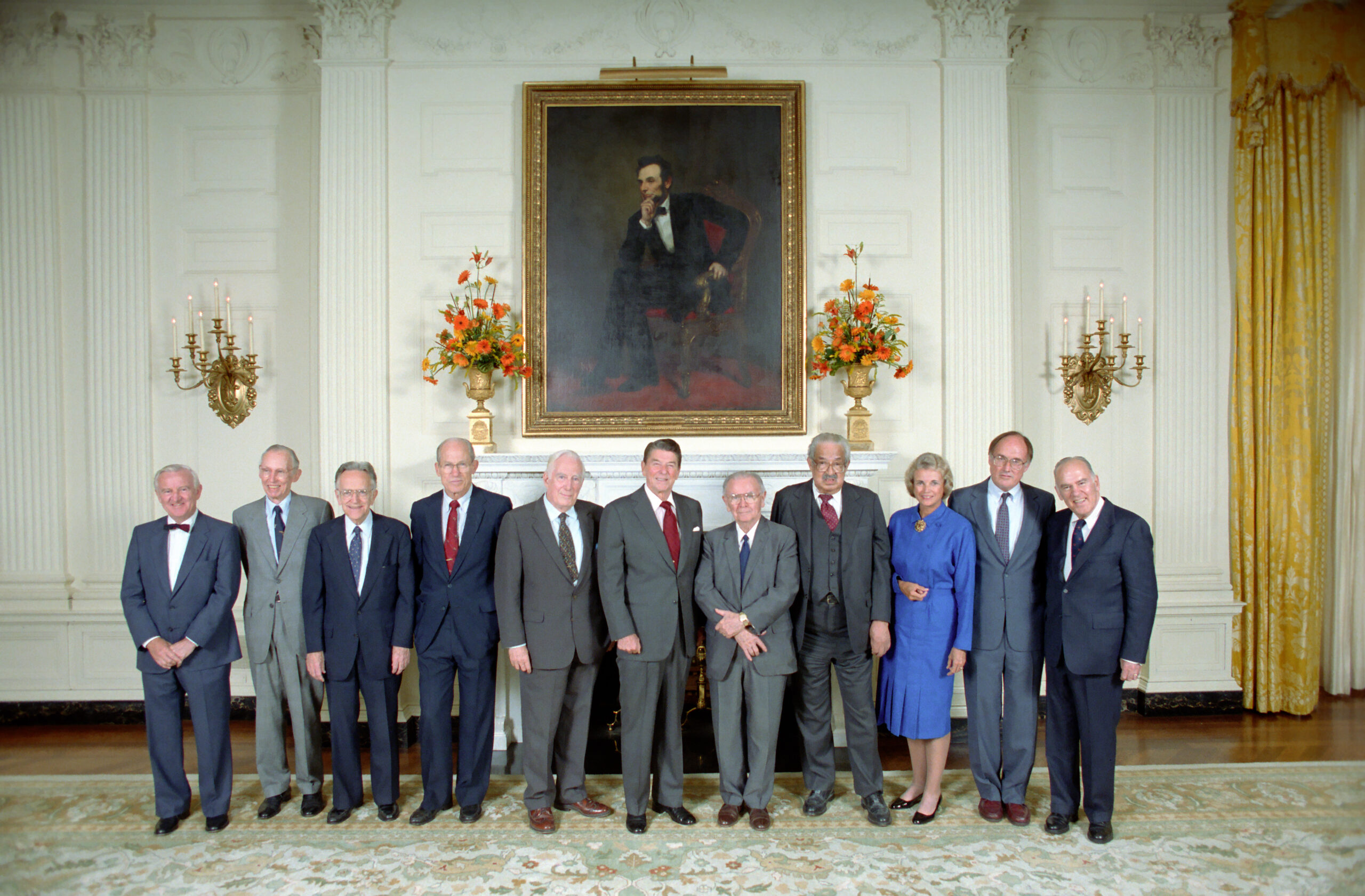
Justice Potter Stewart, second from the right
National Archives Identifier: 75854335
So what is the definition of obscenity? If anyone was looking for clarification from this 1964 court case, they didn’t exactly get it. Six justices found that The Lovers was not an obscene film, and Jacobellis’ conviction was reversed. But they wrote four different opinions on what did constitute obscenity. Two justices called materials obscene when the content appealed to an “average person’s” “prurient interests.” Two more justices said that the first amendment did not allow for censorship of any kind. But the most famous opinion came from Justice Potter Stewart, who said that obscenity applied only to “hard core pornography.” The next logical question is what constitutes hard core pornography. Justice Stewart had an answer to that too, writing in his opinion: “I know it when I see it.”
Oral argument recording: Jacobellis v. Ohio, 1964
(1 hour 7 minutes 41 seconds)
National Archives Identifier: 81138710
Loyalty in Crisis
World War I began in Europe on July 28, 1914, when Austria-Hungary declared war on Serbia. Other European nations quickly chose sides, and by August 4, the alliances were in place and the battlelines were being drawn. Led by Austria-Hungary, the Central Powers included the German Empire, the Ottoman Empire, and the Kingdom of Bulgaria. The Allies were led by the United Kingdom, Russia, France, Italy, and Japan.
The United States stayed clear of the conflict until April 1917, but by then, the Germans’ unrestricted submarine warfare, which had sunk many vessels, including some U.S. ships, and profoundly disrupted cross-Atlantic shipping, drove Congress to declare war on Germany in April of that year. It was not until December that Congress declared war on Austria-Hungary.
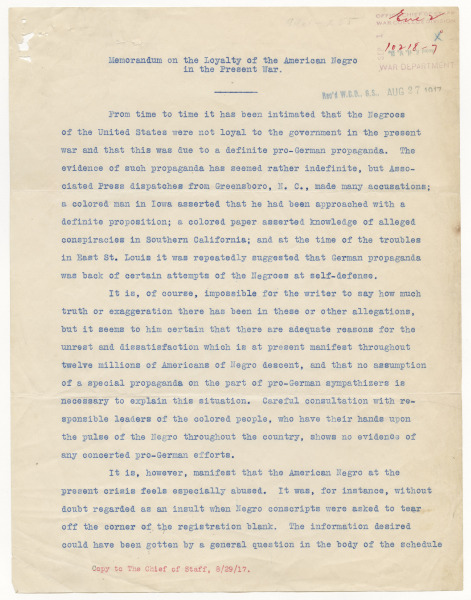
NAACP memo: The Loyalty of the American Negro
Source: Records of Rights
There is some evidence, however, that government officials quickly suspected members of the Black community of being less than enthusiastic about America’s entry into the war. A “Memorandum on the Loyalty of the American Negro in the Present War,” written by members of the NAACP, refuted rumors that German agents were infiltrating Black society and stirring up discontent among African Americans. The authors went on to list many reasons Black people might feel aggrieved, including widespread lynchings throughout the country, mob violence directed at them in many cities, and discrimination against them when they served in the armed forces.
Apparently, the onset of the war gave the federal government an opportunity to threaten to censor publications that it saw as particularly troublesome. On June 6, 1918, M. Churchill, a chief of the Military Intelligence Branch, Executive Division, sent a stern letter to Charles Studin, a member of the NAACP Executive Board, warning him not to publish anything in The Crisis, the NAACP’s flagship publication, that might make it “liable to suppression in the future.” Edited by W. E. B. DuBois, The Crisis had been a platform for those speaking out against the discrimination and oppression of Black people since its founding in 1910. As its original editor, DuBois stated the publication’s purpose was to “set forth those facts and arguments which show the danger of race prejudice, particularly as manifested today toward colored people.” Thus, The Crisis was, and always had been, a particular thorn in the side of the federal government.
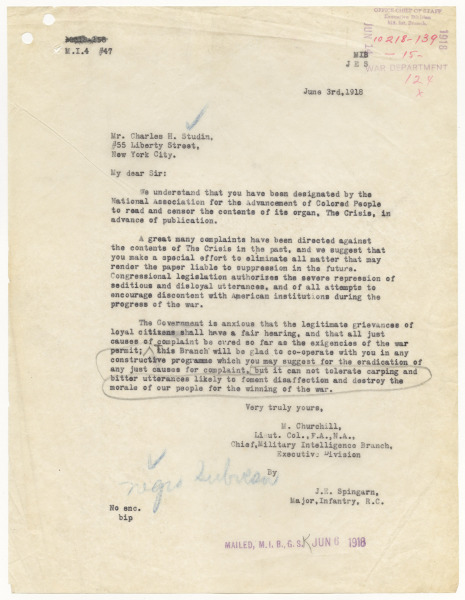
Self-censorship of The Crisis, 1917
Source: Records of Rights
Churchill went on to assure Studin that, “This Branch will be glad to cooperate with you in any constructive programme which you may suggest for the eradication of any just causes for complaint, but it can not tolerate carping and bitter utterances likely to foment disaffection and destroy the morale of our people for the winning of the war.” Both of these documents are currently on view in the National Archives’ permanent Record of Rights exhibition.
Curiously, in July 1918, DuBois published an editorial in The Crisis urging Black Americans to support the war. “Let us, while this war lasts, forget our special grievances and close our ranks shoulder to shoulder with our own white fellow citizens and the allied nations that are fighting for democracy,” he wrote.
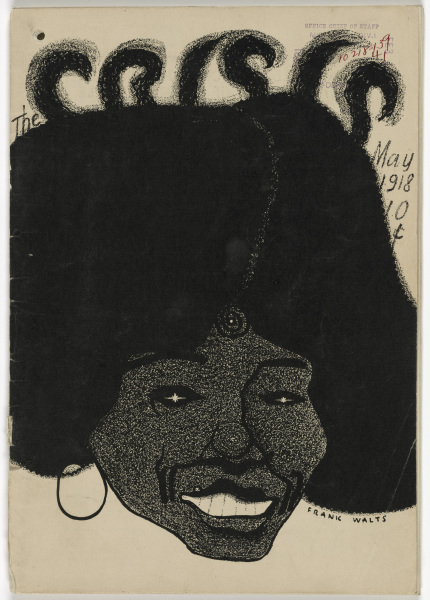
Cover of The Crisis in 1918
Source: Records of Rights
Many people were astounded by DuBois’ words. The fact that Joel Spingarn, an Army military intelligence officer, was working to have DuBois appointed an officer in a Black military intelligence group made many suspect that DuBois was pulling in his horns to secure the appointment. Spingarn’s plans came to naught, however, and DuBois always denied there was any connection between them and the timing of the editorial.
Much later, in his 1940 book Dusk of Dawn: An Essay Toward an Autobiography of a Race Concept, DuBois explained, “I felt for a moment during the war that I could be without reservation a patriotic American. I am less sure now than then of the soundness of this war attitude.”
Too far?

“In Defense of the Ku Klux Klan” letter, 1921
Source: Records of Rights
There’s a debate raging on the internet: to what extent, if any, should “hate speech” be moderated? While the Constitution can’t offer clarity around platforms like Facebook or Twitter, there have been multiple first amendment cases about government regulation.
At the turn of the century, the Ku Klux Klan was rising in membership, popularity, and visibility. As America retreated into isolationism during the 1920s, groups like the KKK who called themselves “100% American” appealed to the public’s anti-foreigner mindset that followed the end of World War I. Embolden by these national sentiments, the KKK went truly national during this time with publications, parades, rallies, and other demonstrations. While the KKK had its detractors, it also had defenders. A Connecticut man even wrote to President Harding: “I cannot understand why it is un-American because a large group of our citizens who are native born and of the Protestant faith want to have a society of their own…”

1950 KU KLUX KLAN MARCH 1925
Click on image above to view the 57 minute film on NARA’s Records of Rights Exhibit online
The Klan also had no problem defending their first amendment rights in public, holding demonstrations on the national stage in Washington, DC, that were often televised. They openly petitioned the government for their right to free speech and flexed their political muscles, particularly in favor of a 1924 immigration bill that would limit the immigration quota from any one country to 2 percent of its current population in the United States. This was strongly supported by the Women’s Auxiliary Unit of the KKK, which petitioned President Coolidge publicly and held marches.
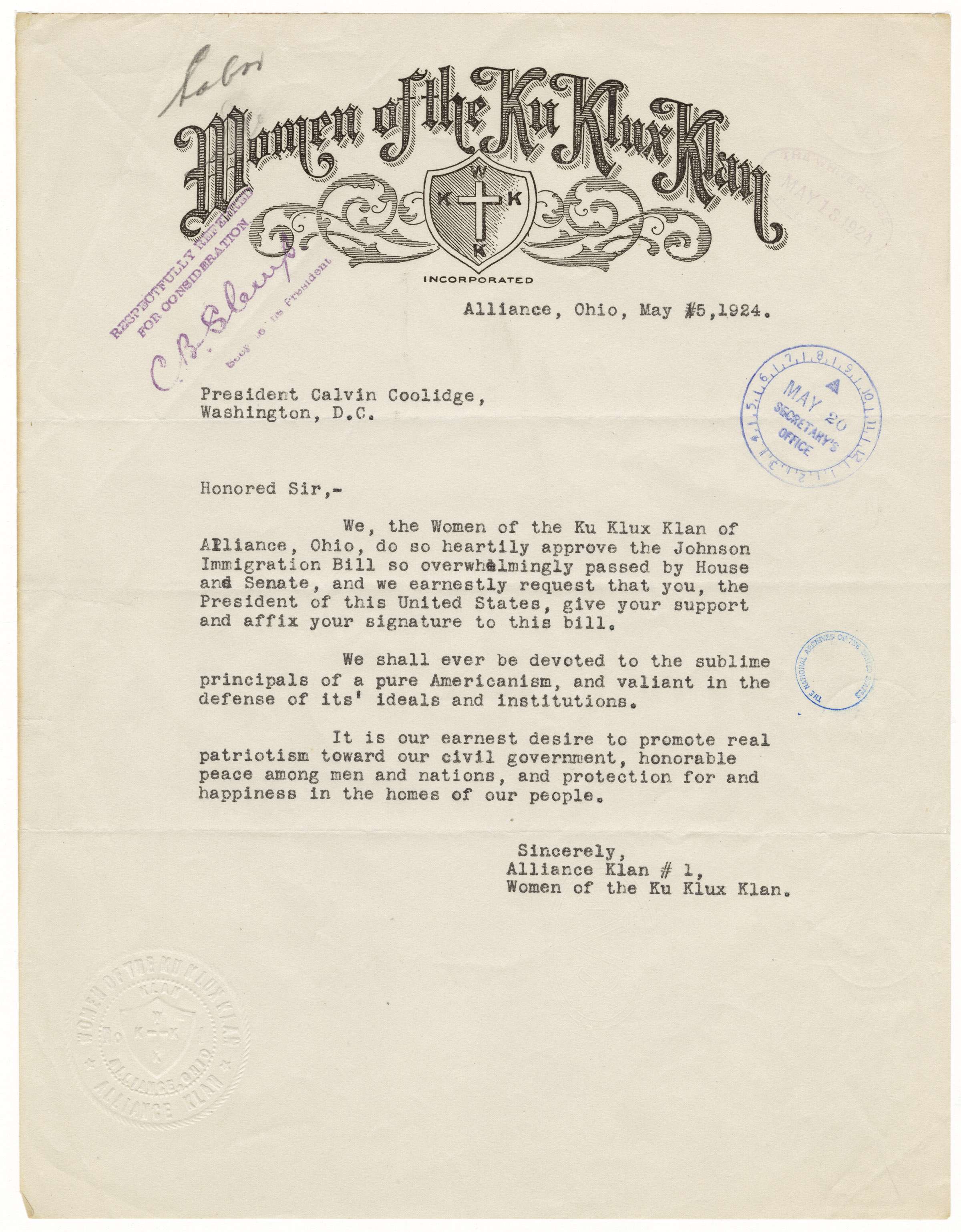
Women of the KKK petition President Coolidge
NARA’s DocsTeach
In 1931, the topic of this type of speech reached a boiling point in the case of Near v. Minnesota, better known as the “Saturday Night Press Case.” J. M. Near published a paper that he self-described as “anti-Catholic, anti-Semitic, anti-Black, and anti-labor.” The paper also contained racist, and false, accusations against current elected officials and other scandal sheets. Using the “Minnesota Gag Law,” Near was arrested as a public nuisance for distributing papers that were “malicious, scandalous, and defamatory.”

Judgment in Near v. Minnesota, 1931
Source: Records of Rights

KKK Women’s Auxiliary Unit marches in DC, 1928
Source: Records of Rights
In a ruling that surprised many, the Supreme Court ruled 5-4 in Near’s favor, overturning his conviction. This was a landmark decision, as Chief Justice Hughes pointed out in his opinion that for 150 years, no case had attempted to restrict the publication of any papers or opinions, which in his mind solidified the importance and power of the first amendment.
The court didn’t allow a blanket right of publication, though. Exceptions were made in the cases of national security, libel, and obscenity. (But what is obscenity, really? If you haven’t yet, go back and read the first story.)

Did you know?
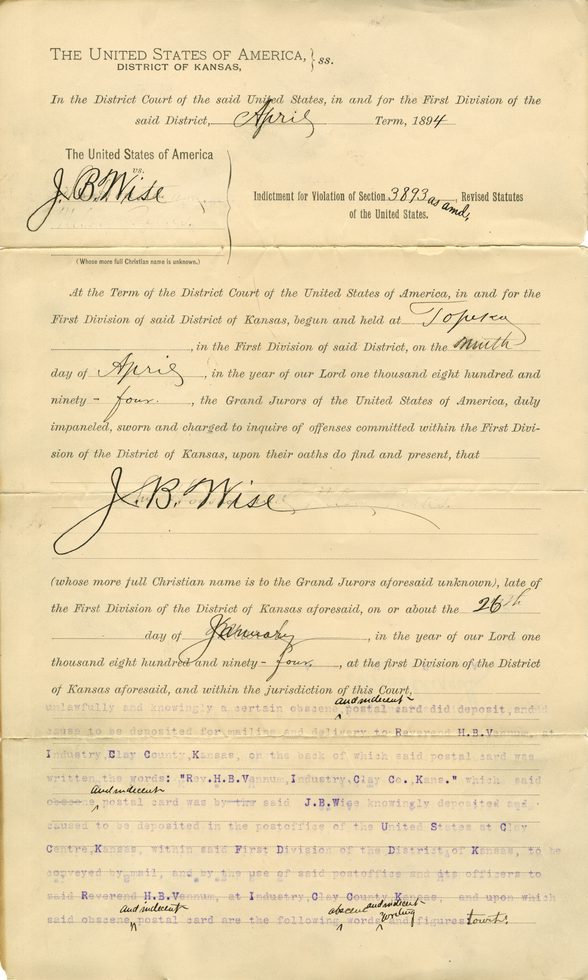
J. B. WISE OBSCENITY CASE 1894
Source: Records of Rights
At the end of the 1800s, obscenity laws were so strict that even religious texts weren’t exempt. In 1894, J. B. Wise (full name unknown) was arrested and fined $50 for writing what was considered an “obscene” Bible verse on the back of a postcard.
More problematic than the writing of the verse was the fact that he mailed it. The 1873 Comstock Act expressly prohibited the mailing of obscene materials.
According to the First District Court of Kansas, the particular verse that Wise quoted and mailed from Clay Center, Kansas, was obscene.
View this profile on InstagramNational Archives Foundation (@archivesfdn) • Instagram photos and videos
Related Content



